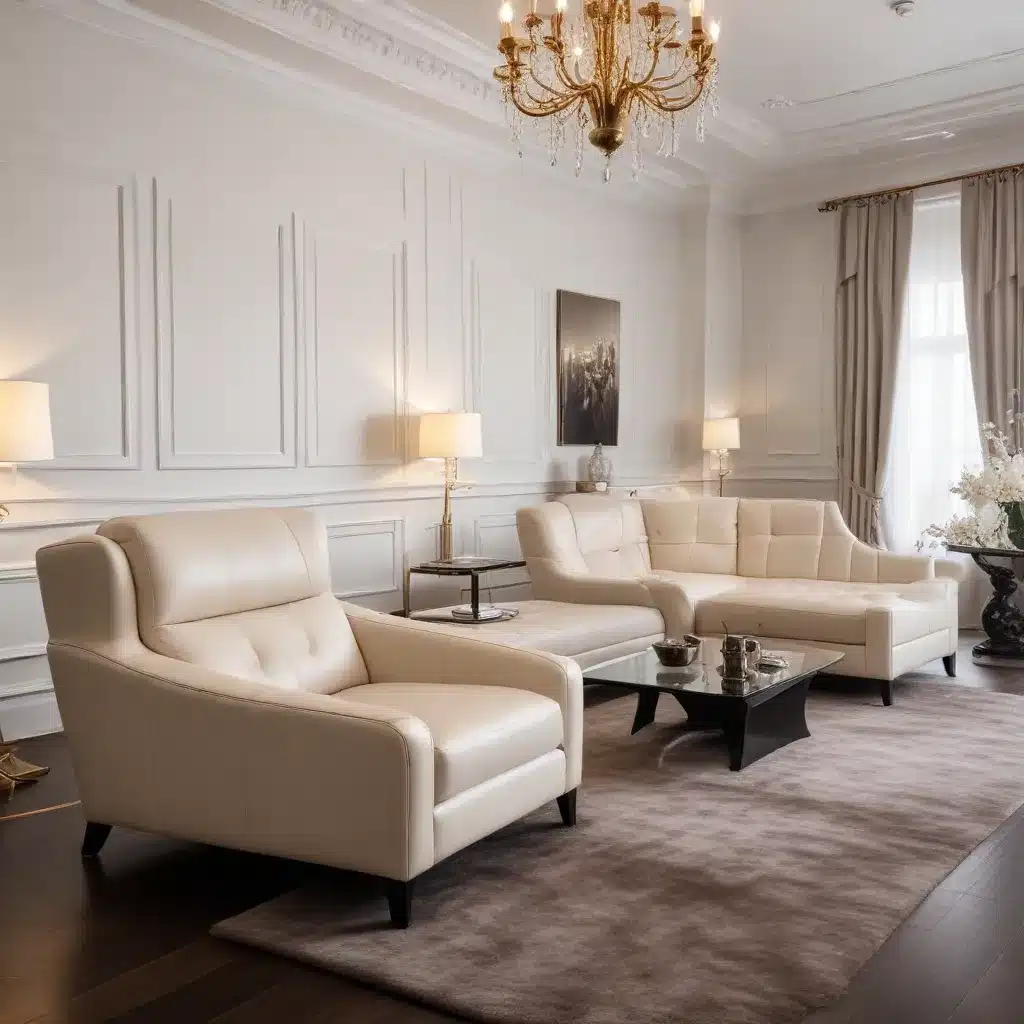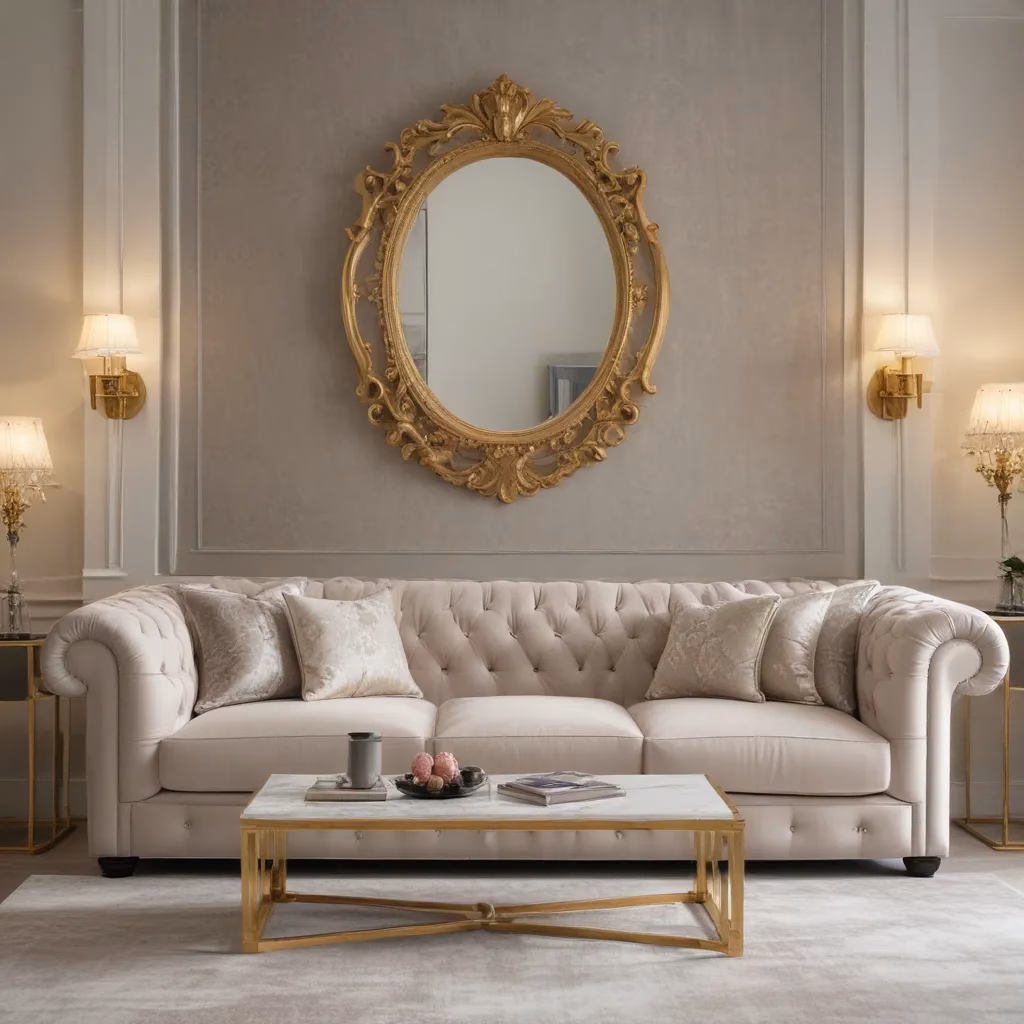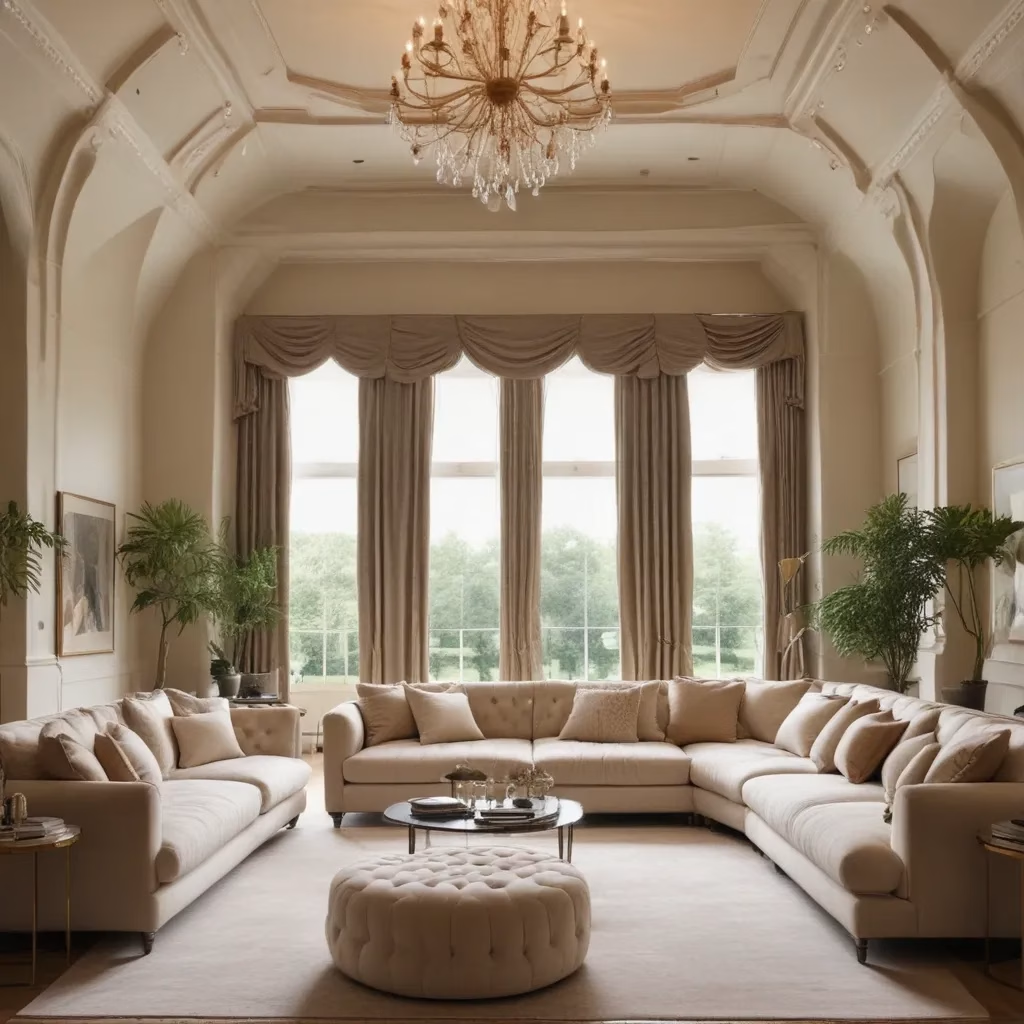
The Allure of Leather in High-End Furniture
As a furniture specialist with years of experience in the industry, I’ve had the pleasure of working with a wide array of materials and designs. However, there’s something truly special about luxury leather lounges that never fails to captivate both myself and my clients. The rich texture, the unmistakable aroma, and the way it ages with grace – leather furniture is more than just a seating option; it’s a statement of sophistication and taste.
When I first entered the world of high-end furniture, I was immediately drawn to the timeless appeal of leather sofas. There’s a reason why leather has been a symbol of luxury for centuries. It’s not just about the look; it’s about the entire sensory experience. Running your hand over a premium leather sofa is unlike anything else – the cool touch that warms to your body temperature, the subtle give that speaks to its durability, and the knowledge that this piece will only become more beautiful with time.
In my professional opinion, investing in a luxury leather lounge is one of the wisest decisions a homeowner can make. Not only does it elevate the aesthetic of any room, but it also provides unparalleled comfort and longevity. I’ve seen leather sofas that have been in families for generations, each year adding to their character and charm. It’s this combination of beauty and practicality that makes leather an enduring favorite in the world of high-end furniture.
Selecting the Perfect Leather Sofa for Your Space
Choosing the right leather sofa for your home is an art form in itself. Over the years, I’ve guided countless clients through this process, and I’ve learned that it’s about much more than just picking a color or style. It’s about finding a piece that resonates with your personal taste while complementing your existing decor.
When selecting a leather sofa, the first thing I always consider is the quality of the leather itself. Full-grain leather is the cream of the crop – it’s the most natural and durable, showing all the unique markings and character of the hide. Top-grain leather is also an excellent choice, offering a more uniform appearance while still maintaining high quality. I often advise clients to avoid bonded leather, which may look similar at first glance but lacks the durability and natural beauty of genuine leather.
The color of your leather sofa is another crucial factor. While classic browns and blacks are timeless choices, don’t be afraid to explore other options. I’ve seen stunning leather sofas in rich burgundies, deep greens, and even vibrant blues that serve as breathtaking focal points in a room. Remember, a leather sofa is an investment piece, so choose a color that you’ll love for years to come.
The Art of Leather Sofa Maintenance
One of the questions I’m most frequently asked is how to maintain a leather sofa to keep it looking its best. The good news is that with proper care, a high-quality leather sofa can last for decades. The key is regular, gentle maintenance rather than infrequent, aggressive cleaning.
First and foremost, I always recommend vacuuming your leather sofa weekly with a soft brush attachment. This prevents dust and debris from settling into the leather’s pores. For spills, act quickly – blot (don’t rub!) with a clean, dry cloth. Avoid using water or cleaning products unless specifically designed for leather furniture.
Conditioning your leather sofa is crucial to maintain its supple texture and prevent cracking. I suggest using a leather conditioner every 6-12 months, depending on the sofa’s exposure to sunlight and heat. Apply the conditioner with a soft cloth, working it into the leather in circular motions. This not only nourishes the leather but also helps to maintain its natural oils.
Designing Your Living Space Around a Leather Lounge
A luxury leather lounge isn’t just a piece of furniture; it’s a centerpiece that can define your entire living space. In my years of interior design work, I’ve found that a well-chosen leather sofa can serve as the perfect foundation for a room’s overall aesthetic.
When designing around a leather sofa, consider its color and style. A classic Chesterfield in rich brown leather, for example, lends itself beautifully to a traditional or even steampunk-inspired decor. Pair it with dark wood accents, brass lamps, and perhaps a vintage map or two for a sophisticated, old-world charm.
On the other hand, a sleek, modern leather sectional in black or white can be the cornerstone of a contemporary living room. I often recommend pairing such pieces with minimalist decor – think clean lines, abstract art, and carefully chosen accent pieces in metal or glass.
Don’t be afraid to mix textures when decorating around your leather sofa. The smooth surface of leather contrasts beautifully with nubby throw pillows, a plush area rug, or even a chunky knit throw. This interplay of textures adds depth and interest to your space, making it feel more lived-in and inviting.
The Environmental Impact of Leather Furniture
As a furniture specialist, I believe it’s important to address the environmental considerations of leather furniture. While leather is a natural material, the process of tanning and treating leather can have significant environmental impacts if not done responsibly.
In recent years, I’ve been heartened to see a growing trend towards eco-friendly leather production. Many high-end furniture manufacturers are now using vegetable-tanned leathers, which rely on natural tannins from bark and other plant matter rather than harsh chemicals. This process is not only better for the environment but often results in a richer, more natural leather finish.
Another aspect to consider is the longevity of leather furniture. While the initial production may have environmental costs, a well-made leather sofa can last for decades, reducing the need for frequent replacements. This longevity can actually make leather a more sustainable choice in the long run compared to cheaper, less durable materials that end up in landfills after a few years.
For those concerned about animal welfare, there are now excellent vegan leather options available. While these may not have the same longevity as genuine leather, they can be a good choice for those who want the look of leather without the use of animal products.
Leather Lounges in Different Interior Design Styles
One of the things I love most about leather lounges is their versatility. Throughout my career, I’ve incorporated leather sofas into virtually every design style imaginable, from rustic farmhouse to ultra-modern minimalism.
In a traditional setting, a tufted leather Chesterfield sofa is hard to beat. The deep button tufting and rolled arms speak to classic elegance, while the leather upholstery adds a touch of luxury. I often pair these with rich wood tones, oriental rugs, and classic art pieces for a timeless, sophisticated look.
For a more modern aesthetic, consider a low-profile leather sectional. The clean lines and smooth leather surface can create a striking focal point in a contemporary living room. I’ve found that pairing these with bold, geometric patterns and pops of bright color can create a dynamic, energetic space.
In industrial-style interiors, distressed leather sofas can add warmth and texture to an otherwise stark space. The worn look of the leather complements exposed brick walls and metal accents beautifully. I often recommend adding soft textiles like wool throws or sheepskin rugs to balance the hardness of industrial elements.
The Psychology of Color in Leather Furniture
The color of your leather sofa can have a significant impact on the mood and atmosphere of your room. As a furniture specialist, I’ve seen firsthand how different leather colors can transform a space.
Black leather sofas, for instance, exude sophistication and drama. They can anchor a room and provide a strong contrast to lighter elements. However, they can also make a space feel smaller, so I often recommend them for larger rooms or paired with plenty of light colors to balance their visual weight.
Brown leather, in its various shades, is perhaps the most versatile. Light tan leather can brighten a room and create a casual, inviting atmosphere. Dark brown leather, on the other hand, adds warmth and richness. I find that brown leather sofas work particularly well in rooms with natural elements like wood and stone.
White or cream leather sofas can make a bold statement. They brighten a room and can make it feel more spacious. However, they do require more maintenance to keep clean. I often suggest white leather for formal living rooms or in modern, minimalist spaces where their pristine appearance can truly shine.
Leather Lounges: An Investment in Comfort and Style
When clients ask me about the value of investing in a luxury leather lounge, I always emphasize the long-term benefits. While the initial cost may be higher than that of a fabric sofa, the durability and timeless appeal of leather make it a wise investment.
A high-quality leather sofa can easily last 15-20 years or more with proper care. Over time, leather develops a beautiful patina that adds character and depth to its appearance. This aging process is part of what makes leather furniture so special – each piece tells a story and becomes uniquely yours over the years.
Moreover, leather furniture maintains its value better than most other types of upholstered furniture. If you ever decide to sell or trade in your leather sofa, you’ll likely find that it has retained much of its value, especially if it’s a well-known brand or designer piece.
From a comfort perspective, leather sofas offer a unique experience. They conform to your body over time, becoming more comfortable with use. Unlike fabric sofas that can become lumpy or saggy, a well-made leather sofa maintains its shape and support for years.
The Role of Leather Lounges in Open-Plan Living
In my experience designing for open-plan living spaces, I’ve found that leather lounges can play a crucial role in defining areas and creating visual cohesion. The substantial presence of a leather sofa can help to anchor a living area within a larger open space.
One technique I often use is to position a large leather sectional to create a natural division between the living and dining areas in an open-plan space. The solid form of the leather sofa acts as a visual barrier, helping to delineate the different functional zones without the need for walls.
Color coordination is key in open-plan designs, and leather sofas offer a great way to tie different areas together. For instance, I might choose a leather sofa in a color that complements both the kitchen cabinetry and the dining room furniture, creating a harmonious flow throughout the space.
In loft-style apartments or homes with high ceilings, a generously sized leather sofa can help to balance the vertical space. The rich texture and substantial presence of leather furniture can make these large spaces feel more grounded and intimate.
Caring for Leather Lounges in Different Climates
One aspect of leather furniture care that I find many people overlook is the impact of climate. Having worked with clients in various parts of the world, I’ve learned that the care routine for a leather sofa can vary significantly depending on the local environment.
In humid climates, leather furniture is prone to mold and mildew. I always advise clients in these areas to use a dehumidifier in the room where their leather sofa is located. Regular cleaning with a dry cloth is also crucial to prevent moisture buildup. In extreme cases, a leather-safe mold inhibitor may be necessary.
Conversely, in very dry climates, leather can become brittle and crack. Here, the key is regular conditioning to keep the leather supple. I recommend using a high-quality leather conditioner every 3-4 months in dry climates, as opposed to the usual 6-12 month schedule.
In areas with strong sunlight, leather furniture is at risk of fading and drying out. If possible, position your leather sofa away from direct sunlight. If this isn’t feasible, consider using UV-protective window films or drawing curtains during the sunniest parts of the day. More frequent conditioning may also be necessary to combat the drying effects of the sun.
The Future of Leather Lounges: Innovations and Trends
As someone who’s been in the furniture industry for many years, I’ve witnessed significant innovations in leather furniture design and production. Looking ahead, I see several exciting trends emerging in the world of luxury leather lounges.
One of the most promising developments is the rise of sustainable leather production methods. Many manufacturers are now exploring ways to reduce water usage and chemical pollution in the tanning process. Some are even experimenting with plant-based tanning methods that are completely chrome-free.
Another trend I’m excited about is the integration of technology into leather furniture. We’re seeing leather sofas with built-in USB charging ports, adjustable headrests, and even smart home integration. Imagine being able to adjust the recline of your leather sofa with a voice command or smartphone app!
In terms of design, I’m noticing a move towards more modular leather furniture. These pieces offer incredible flexibility, allowing homeowners to reconfigure their seating arrangements to suit different needs. This adaptability is particularly valuable in urban living spaces where maximizing space is crucial.
Lastly, there’s a growing appreciation for artisanal leather work. Hand-stitched details, custom patinas, and bespoke leather colors are becoming increasingly popular among discerning clients who want truly unique pieces.
Conclusion: The Timeless Appeal of Leather Lounges
As we wrap up our exploration of luxury leather lounges, I’m reminded of why I fell in love with this classic furniture style in the first place. There’s something truly special about a well-crafted leather sofa – it’s not just a piece of furniture, but a work of art that becomes more beautiful with time.
Throughout my career, I’ve seen trends come and go, but leather lounges have remained a constant symbol of elegance and quality. Whether in a traditional study, a modern loft, or a cozy family room, a leather sofa always seems to find its place.
For those considering investing in a leather lounge, I encourage you to visit showrooms, feel the different leather qualities, and imagine how each piece might fit into your home. Remember, a leather sofa is more than just a purchase – it’s an investment in your home’s comfort and style for years to come.
As you embark on your journey to find the perfect leather lounge, don’t hesitate to seek expert advice. Websites like Sofa Spectacular offer a wealth of information and options to help you make an informed decision. With the right care and attention, your leather lounge will be a cherished part of your home for generations to come.



